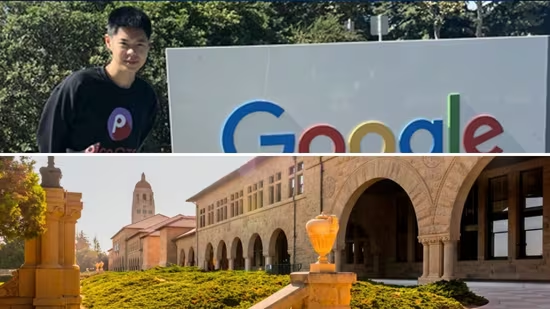Exclusive: ‘Asian Americans face bias,’ expert shares tips for students to get accepted at MIT and Stanford
Recently an Asian American student from Palo Alto, California, was rejected by 16 out of the 18 top U.S. universities he applied for. Stanley Zhong's story made headlines after Google offered him a full-time role despite these rejections. Zhong's SAT score of 1590 out of 1600 a near 4.0 GPA triggered questions around racial discrimination and the subjective nature of the admissions process. HindustanTimes.com spoke with Allen Koh, the CEO and founder of Cardinal Education, an educational consulting firm, to get a clearer picture of this situation.

Why did Asian American student face rejection?
Weighing in on Zhong's case, Koh said that in the United States, “We have grade inflation, so getting an A is not that hard." However, he added, for a foreign audience, it is very shocking that he was rejected despite a 4.0 GPA, “what is shocking is that with a near-perfect SAT score, he got rejected from many lower rank colleges.” Getting into more specifics in terms of questions about race, Koh said, “If you're an Asian male interested in computer science, you face the worst possibilities for admissions possible." He further adds that Computer science is really competitive and the probability of getting accepted is lower for everybody.
We're now on WhatsApp. Click to join.Diversity in American universities
Talking about the diversity in American universities, he said, “They want different kinds of students in their population, so generally speaking, if you're looking at accomplishments, Asian American students would dominate, and universities do not want to have a class full of just Asian American males. Due to this, as an Asian American male, you have to hit a higher standard to be accepted.”
Highlighting his job offer from Google, Koh noted, “He spent a lot of time learning computer science in a way that is hard for universities to validate and didn't talk about any competitions, and if you don't mention competitions, it is hard for universities to know how advanced your computer science is.”
When asked about why Zhong faced rejections, Koh explained his profile from the eyes of an Admissions Officers, saying, “He has a three-year-old startup that does not make money and is not very popular, he does not have a track record of doing competitions, he has learned a lot but not in a way that he can prove.”
What can Asian American students do to get accepted into top colleges?
Koh said, “What do American universities want? They want leaders, and the obvious way to show great leadership is through community service. Whether you are volunteering at a Gurudwara, teaching children or helping pharmacies come up with new technologies. So there are things you could be doing outside of schools for public service.” The education counselling expert asserted that projects for non-profits show a student's “real-world problem-solving skills and shows he has a good heart.”
Speaking from personal experiences, Koh said, “If we have students interested in computer science, we have them try to do meaningful projects that are meaningful and authentic to them but also make a difference in the real world. That will show you have the potential to be a leader in computer science.”
Admission process in the United States
Pointing out the difference between American colleges and universities in other countries, Koh said, “Systems in most countries are actually very transparent, the variables are clear and they're known to everybody. In the United States, the number of variables is unknown and opaque; and American universities deliberately obfuscate some very important things.”
How does one get into MIT and Stanford?
“One important strategy if you are very interested in studying computer science at MIT and Stanford is don't say that you want to study computer science at MIT and Stanford,” Koh revealed. “In America, you have a lot of freedom to change your major, one of the biggest mistakes is to publicly announce the most competitive majors instead of just picking a less popular major and then transferring into it.”
Though it is a huge tip, Koh said that there is a lot of strategy involved in doing this, “Universities are not naive, just picking a cockamamie major for an advantage is not as simple as that.” “Stanford costs almost $85,000 a year, most people cannot afford to change into a major they can fail,” Koh remarked.
Is there a racial discrimination?
Coming to the question of whether racial discrimination is prevalent in American universities, Koh admitted, “Of course there is, in American society, you cannot make fun of any minority group except for Asians. There are strong repercussions for saying anything about any minority group, however, Asians are the only minority group you can say something about in public and have it not ruin your life.” “Asian Americans are only considered minorities for neutral or bad things but never considered minorities for good things.”
Calling it a “sad truth,” Koh, who is a Korean American, said that this is “Why I am motivated in my job to help people and why I do these kinds of interviews so that the public at least has some information that can give them some sort of compensatory strategy.”
Disclaimer: The copyright of this article belongs to the original author. Reposting this article is solely for the purpose of information dissemination and does not constitute any investment advice. If there is any infringement, please contact us immediately. We will make corrections or deletions as necessary. Thank you.
Title:Exclusive: ‘Asian Americans face bias,’ expert shares tips for students to get accepted at MIT and Stanford
Url:https://www.investsfocus.com









